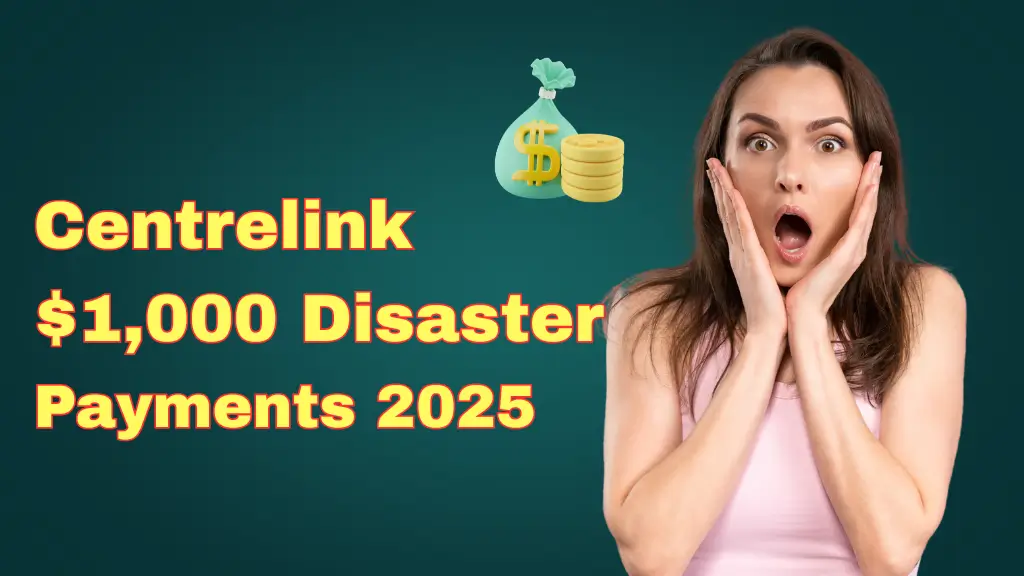As parts of Queensland and New South Wales recover from recent cyclone damage, many residents are applying for Centrelink disaster payments. However, small mistakes during the claim process are causing payment delays or rejections for thousands.
This article explains the two main disaster payment types, how to avoid common errors, and the steps you should follow to receive timely support.

Understanding the Two Key Disaster Payments
1. Australian Government Disaster Recovery Payment (AGDRP)
- One-time payment of $1,000 per adult and $400 per child.
- Meant for people who have experienced personal hardship, including serious injury, loss of an immediate family member, or property destruction.
- No proof of income loss is required, but documentation such as photographs or official damage reports is essential.
2. Disaster Recovery Allowance (DRA)
- Short-term income support for individuals whose earnings have been affected by the disaster.
- Paid for up to 13 weeks, and the payments are taxable.
- Requires evidence of income loss, such as payslips or employer letters, and is subject to income and assets testing.
Common Claim Mistakes to Avoid
Many applicants are making avoidable errors that can lead to delays or disqualification:
- Applying for the wrong payment: Make sure you understand whether your loss is financial (DRA) or personal (AGDRP).
- Missing documents: Claims without supporting evidence are likely to be rejected.
- Duplicate applications: Applying for both schemes without eligibility may lead to disqualification.
- Using unofficial websites: Only apply through myGov or the official Services Australia platform to protect your data.
How to Apply Correctly
To ensure your claim is processed without issues, follow these steps:
- Check Your Eligibility
Confirm if your area is listed under a declared disaster zone on the Services Australia website. - Prepare Documentation
- For AGDRP: Photos, insurance reports, or police records.
- For DRA: Payslips, employer statements, or bank records showing loss of income.
- Apply via myGov
Use your myGov account to lodge your claim under the correct disaster payment section. - Contact Centrelink if in Doubt
If you are unsure which payment applies to you, speak with a Centrelink representative to avoid filing incorrectly.
Additional Help from State and Territory Governments
You may also qualify for extra support through state-run schemes like the Disaster Recovery Funding Arrangements (DRFA). These may offer:
- Emergency accommodation
- Essential repairs
- Replacement of household items
Apply separately through your state government website and check for local deadlines.
Frequently Asked Questions (FAQs)
Q1. Can I apply for both AGDRP and DRA?
No, you must choose based on your situation. Dual applications can cause delays or rejection.
Q2. How long does it take to receive payment?
Once approved, funds are usually deposited within days, but delays may occur if documents are missing.
Q3. Is DRA taxable?
Yes, the Disaster Recovery Allowance is considered taxable income.
Q4. Can I appeal a rejected claim?
Yes. You can request a review by contacting Services Australia if your claim is denied.
Q5. Where can I apply for these payments?
Log into your myGov account and go to the Centrelink disaster support section.
Final Thoughts
Whether you’ve lost income or experienced property damage, disaster payments from Centrelink can be a vital support during recovery. But to receive the funds you deserve, it’s critical to understand the system, apply through the correct channels, and avoid common mistakes.
- Read Also:
- Australia Centrelink Cost of Living Payment 2025 – Check Eligibility, Amount & Dates
- Centrelink $750 Payment 2025: Who Qualifies, Payment Dates, and Check Eligibility
- Centrelink $1,144 One-Time Payment 2025: Eligibility, Payment Dates & Key Facts
As a finance news writer at sirfal.com, I specialize in breaking down complex economic trends, market updates, and investment strategies into clear, actionable insights. My mission is to empower readers with the knowledge needed to make informed financial decisions. Thank you for engaging with my articles; I hope they add value to your financial journey.